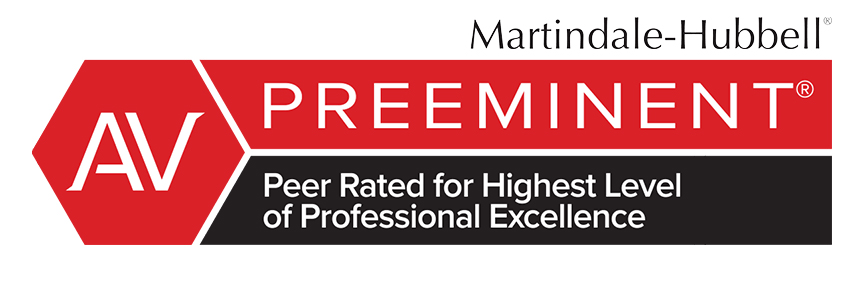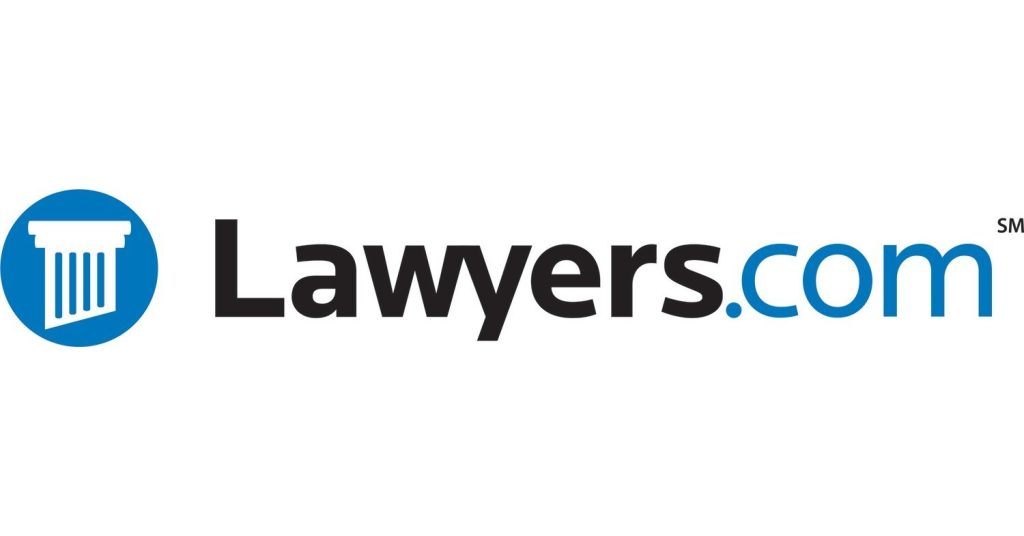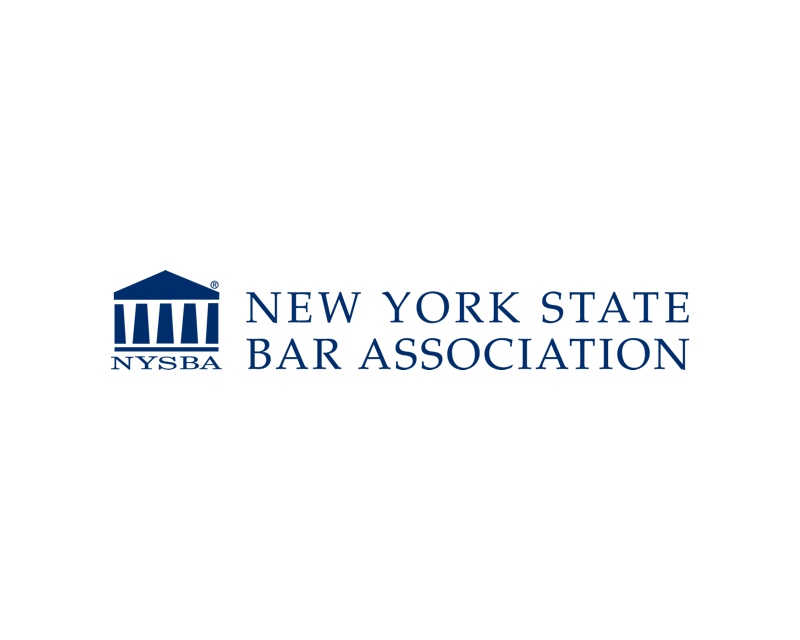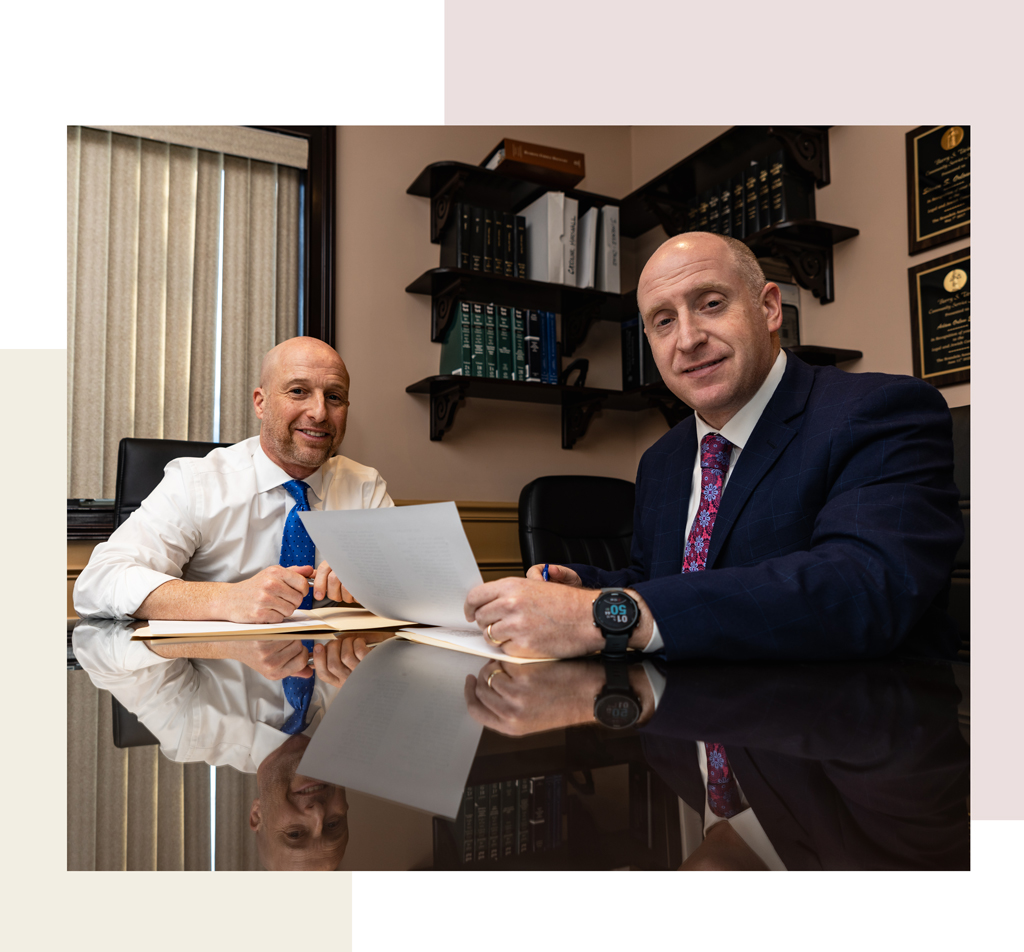Who is Liable in a Car Accident, Owner or Driver?
Quick Answer: In New York City, liability in a car accident typically falls on the driver who caused the collision; however, the vehicle’s owner may also be held responsible under certain circumstances, such as when they knowingly allowed an unsafe driver to operate their car. Determining liability depends on the specific details of the accident and applicable laws.
Understanding Liability in NYC Car Accidents: Owner vs. Driver
Asking Who is Liable in a Car Accident, Owner or Driver is essential for anyone involved in or affected by a vehicle collision in New York City. Liability—meaning legal responsibility to pay for damages and injuries—is not always straightforward, as both the driver and the vehicle owner can potentially be held accountable depending on the circumstances. Navigating these complexities requires a clear understanding of how liability is determined under New York law.
In many cases, the person operating the vehicle (the driver) is directly responsible for an accident, particularly if their actions caused or contributed to the collision. Common examples of driver negligence include:
- Speeding or reckless driving: Operating a vehicle at unsafe speeds or driving aggressively.
- Distracted driving: Using a cellphone, texting, or engaging in other activities that divert attention from the road.
- Driving under the influence: Operating a vehicle while impaired by alcohol or drugs.
- Ignoring traffic signals and signs: Running red lights, stop signs, or failing to yield.
However, under certain circumstances, the vehicle owner may also bear liability—even if they were not the one driving at the time of the accident. In New York, the “permissive use” law plays a significant role in determining owner liability. This law states that if an owner willingly allows another person to drive their car, the owner can be held financially responsible for any damages or injuries resulting from the driver’s negligence. For example, if you lend your car to a friend or family member and they cause an accident due to careless driving, you may be liable for the resulting damages.
Additionally, in situations involving company-owned vehicles, the employer or company may be liable for accidents caused by employees while performing work-related duties. This is known as “vicarious liability,” which we will explore in further detail later in this post.
Determining liability in NYC car accidents can quickly become complex, especially when multiple parties are involved. If you have been involved in a car accident, it is crucial to consult with a dedicated personal injury attorney who can carefully evaluate your case and help clarify who may be responsible.
If you need immediate assistance or have questions about liability in your car accident, contact The Orlow Firm directly at (646) 647-3398 for a free consultation.
When is the Vehicle Owner Responsible for a Car Accident in New York?
In New York, vehicle owners can sometimes be held responsible for car accidents, even if they weren’t driving at the time of the incident. This may surprise many New Yorkers who assume that only the driver bears responsibility. However, under specific circumstances, New York law allows injured parties to hold vehicle owners accountable.
One critical factor in determining owner liability is the concept known as “permissive use.” According to New York’s Vehicle and Traffic Law Section 388, vehicle owners are liable for accidents caused by anyone operating their vehicle with their permission. This law extends liability to the registered owner, ensuring that injured parties have a means of recovering compensation if the driver lacks sufficient insurance or financial resources.
Here are several situations in which a vehicle owner may be held responsible for a car accident in New York City:
- Authorized Use: If the driver involved in the accident had explicit or implied permission from the owner to use the vehicle, the owner could be held accountable.
- Negligent Entrustment: Owners may face liability if they knowingly allow someone unlicensed, inexperienced, intoxicated, or otherwise unfit to operate their vehicle, and that person causes an accident.
- Employer-Owned Vehicles: Businesses and employers who own vehicles used by employees for work-related purposes may also be liable if an employee causes an accident while performing job duties.
- Family Members Driving: If a family member uses your car with your permission and is involved in an accident, you may be held responsible under New York’s permissive use law.
It’s important to note that owner liability typically applies to accidents occurring within New York State. If a vehicle is involved in an accident in another state, that state’s laws regarding owner liability will generally apply.
If you are a vehicle owner or have been involved in an accident with someone else’s vehicle in New York City, understanding your rights and responsibilities is crucial. Determining liability can be complicated, and it’s advisable to consult with an experienced personal injury attorney to clarify your situation. For personalized guidance, contact The Orlow Firm today at (646) 647-3398.
Driver Liability: When Does the Driver Bear Responsibility?
In New York City, establishing driver liability in a car accident generally centers on determining whether the driver acted negligently. Negligence, in simple terms, refers to a driver’s failure to exercise reasonable care while operating a vehicle, resulting in harm or injury to others. When a driver’s carelessness directly causes an accident, they can be held legally responsible for any injuries or damages that result.
Common examples of driver negligence include:
- Distracted Driving: Texting, talking on the phone, adjusting the radio, or engaging in any activity that diverts attention from the road.
- Speeding or Aggressive Driving: Exceeding speed limits, tailgating, weaving through traffic, or otherwise driving recklessly.
- Driving Under the Influence (DUI): Operating a vehicle while impaired by alcohol or drugs.
- Failing to Obey Traffic Signals and Signs: Running red lights, ignoring stop signs, or failing to yield the right-of-way.
- Driving While Fatigued: Operating a vehicle while overly tired, which can impair judgment, reaction times, and decision-making abilities.
In addition to these behaviors, drivers in NYC are expected to adapt to specific road and traffic conditions. For instance, a driver who fails to slow down in heavy rain or snow, or who does not exercise caution in congested city streets, might also be found negligent in the event of an accident.
It’s important to note that New York follows a “comparative negligence” system. This means that even if multiple parties share responsibility for an accident, each party can still recover compensation proportionate to their level of fault. For example, if a driver is determined to be 70% at fault for speeding and causing an accident, they can still potentially recover 30% of their damages from the other party if that party is found to have contributed to the accident as well.
When determining driver liability, authorities and insurance adjusters typically review various types of evidence, such as:
- Police reports documenting the accident scene and statements from involved parties and witnesses.
- Traffic camera footage or surveillance video from nearby businesses.
- Photographs of vehicle damage, road conditions, and injuries.
- Testimony from eyewitnesses.
- Expert analysis from accident reconstruction specialists, if necessary.
If you’ve been involved in a car accident in New York City and have questions about driver liability or your rights, consulting with an experienced personal injury attorney can be an important step in clarifying your situation and exploring your options for compensation. For personalized guidance, you can contact The Orlow Firm directly at (646) 647-3398.
The Role of Permission: Authorized vs. Unauthorized Vehicle Use in NYC
In New York City, permission plays a crucial role when determining liability in car accidents involving someone other than the vehicle’s owner. Understanding the distinction between authorized and unauthorized vehicle use is essential, as it can significantly affect who is ultimately held responsible for damages and injuries.
Authorized Vehicle Use in NYC
When an owner grants permission to another person to operate their vehicle, New York’s “permissive use” law typically comes into play. Under permissive use, the vehicle owner can be held liable for accidents caused by the authorized driver. This means that if you lend your car to a friend or family member and they are involved in an accident, you, as the vehicle owner, could be legally responsible for damages, even if you were not present at the time of the incident.
For example, if you lend your car to a friend who then rear-ends another vehicle at a busy intersection in Manhattan, you, as the registered owner, could potentially face liability claims from the injured parties.
Unauthorized Vehicle Use in NYC
However, liability changes significantly when the driver does not have the owner’s authorization. If a vehicle is stolen or taken without consent, owners generally are not liable for accidents caused by the unauthorized driver. In such cases, the driver alone typically bears responsibility for any resulting damages or injuries.
For instance, if your vehicle was stolen from a parking lot in Brooklyn and the thief subsequently caused an accident, you would likely not be held liable for the resulting damages, provided you promptly reported the theft to the police.
To summarize, key points regarding permission and liability include:
- Authorized use: Vehicle owners can be held liable for accidents caused by drivers they authorized to use their vehicle.
- Unauthorized use: Vehicle owners typically are not liable if their vehicle was used without their consent, such as in theft scenarios.
Determining whether the driver had explicit or implied permission can sometimes be complicated. This complexity underscores the importance of seeking guidance from an experienced NYC personal injury attorney who can help clarify your situation and protect your rights.
If you have questions about liability related to authorized or unauthorized vehicle use in New York City, The Orlow Firm is here to help. Contact us today at (646) 647-3398 for a confidential consultation.
How New York’s “Permissive Use” Law Affects Accident Liability
In New York, the concept of “permissive use” plays a significant role in determining whether the owner or the driver of a vehicle is responsible after a car accident. Under New York State law, vehicle owners can be held financially responsible if they allow someone else to operate their vehicle, and that person subsequently causes an accident. This is referred to as the “permissive use” doctrine.
What exactly does this mean for vehicle owners in New York City? If you lend your car to a friend, family member, or any other individual, and they cause an accident while driving your vehicle, you could potentially be held liable for damages resulting from that accident. The key factor here is permission: liability typically applies if the driver had your consent—explicit or implied—to use your vehicle.
For instance, consider a scenario where you lend your car to a friend to run errands in Manhattan. If your friend gets into an accident on their way to the grocery store, the “permissive use” law means that you, as the vehicle owner, could be held financially responsible for the injuries and damages caused to other parties involved.
However, there are important limitations to keep in mind. New York law generally limits the vehicle owner’s liability under permissive use to specific amounts. Currently, vehicle owners’ liability for bodily injury and property damage is capped at certain statutory limits, which may vary based on the specific circumstances and insurance coverage involved.
It’s important to note that the permissive use doctrine does not apply if your vehicle was taken without your permission. For example, if your car was stolen or used by someone without your knowledge or consent, your liability could be significantly reduced or even eliminated. In such cases, demonstrating that the driver lacked permission can be crucial.
Understanding permissive use and its implications is essential for both vehicle owners and drivers in NYC. If you’re dealing with liability issues after a car accident, consulting with an experienced personal injury attorney can help clarify your rights and responsibilities under New York’s permissive use law.
If you have questions about car accident liability in New York City or need guidance regarding your specific situation, contact The Orlow Firm today at (646) 647-3398 for a free consultation.
Employer Liability: Company-Owned Vehicles and Employee Accidents in NYC
In New York City, determining liability when an employee is involved in a car accident while driving a company-owned vehicle depends on several factors. Under a legal concept known as “respondeat superior“, an employer can be held legally responsible for the actions of their employees if the accident occurred within the scope of employment. In simpler terms, if an employee is performing job-related tasks when the accident happens, the employer may be liable for any resulting damages or injuries.
For instance, consider a scenario where a delivery driver employed by a NYC-based company causes an accident while making deliveries. Because delivering products is part of the driver’s job duties, the employer could potentially be held accountable for the accident and any harm caused to others.
However, there are important exceptions to be aware of. Employers typically are not liable if the employee was not performing job-related duties at the time of the accident. Common examples include:
- Personal errands: If the employee uses a company vehicle to run personal errands unrelated to work, the employer generally isn’t responsible for accidents that occur during these activities.
- Unauthorized use: If the employee was expressly prohibited from using the vehicle at the time of the accident, the employer may not be liable.
- Commuting: Typically, commuting to and from work is considered outside the scope of employment, meaning employers usually aren’t responsible for accidents that happen during an employee’s daily commute.
In addition, employers in NYC have responsibilities regarding vehicle maintenance and safety. If an employer knowingly allows employees to operate unsafe vehicles or fails to maintain company vehicles properly, they could face liability for negligence, regardless of whether the employee was performing work-related tasks at the time.
Because employer liability cases can be complex, it’s essential to seek guidance from a knowledgeable NYC personal injury attorney who can evaluate the specifics of your situation and determine the appropriate legal course of action. If you or a loved one has been injured in an accident involving a company-owned vehicle, contact The Orlow Firm directly at (646) 647-3398 for a consultation and personalized assistance.
Can Both the Owner and Driver Be Held Liable in a New York Accident?
In New York City, it’s important to understand that liability for a car accident isn’t always limited to just one party. Under certain circumstances, both the owner of the vehicle and the driver can be held legally responsible for damages resulting from an accident. This dual liability often arises due to New York’s “permissive use” laws, which hold vehicle owners accountable for accidents caused by drivers who have their permission to operate the vehicle.
Here are some situations in which both the vehicle owner and the driver could be liable:
- Permissive Use: If the owner willingly allows another person to drive their vehicle, and that driver causes an accident, New York law typically holds both the owner and the driver liable. This means the injured parties may be able to pursue compensation from either or both parties.
- Negligent Entrustment: This occurs when an owner knowingly allows someone who is unfit to drive—such as an intoxicated, unlicensed, or reckless driver—to operate their vehicle. In these cases, the owner can be held responsible for their own negligence, while the driver is liable due to their direct actions.
- Employer-Owned Vehicles: If a company vehicle is involved in an accident while being driven by an employee during work-related activities, both the employer (vehicle owner) and employee (driver) may be held accountable under the principle of “vicarious liability.”
Consider this example: Suppose a vehicle owner lends their car to a friend who then causes an accident while running errands in Brooklyn. Under New York’s permissive use law, the injured party could potentially file a claim against both the friend (driver) and the vehicle owner, seeking compensation for medical bills, lost wages, pain, and suffering.
Understanding the nuances of liability in car accidents can be complex. If you find yourself in a situation where liability isn’t clear, speaking with a knowledgeable NYC personal injury attorney can provide clarity and help you determine your best course of action. For personalized guidance, contact The Orlow Firm directly at (646) 647-3398 for a free consultation.
What if the Driver is Uninsured or Underinsured in NYC?
Being involved in a car accident in New York City is stressful enough, but the situation becomes even more complicated when the responsible driver is uninsured or underinsured. In these cases, injured parties may face difficulties recovering compensation for medical bills, lost wages, and other damages.
Understanding Uninsured and Underinsured Motorist Coverage in NYC
New York State law requires all auto insurance policies to include uninsured motorist (UM) coverage. This type of coverage helps protect you if you’re injured by a driver who has no auto insurance at all. Similarly, underinsured motorist (UIM) coverage helps cover your expenses when the at-fault driver does have insurance, but their policy limits are insufficient to fully compensate you for your losses.
In New York, the minimum required uninsured motorist coverage is typically equal to the minimum liability coverage, which currently stands at $25,000 per person and $50,000 per accident. However, drivers can elect to purchase additional coverage for increased protection.
What Happens if You’re Injured by an Uninsured or Underinsured Driver?
If you’re involved in an accident with an uninsured or underinsured driver in NYC, your own insurance policy may step in to provide compensation. Here’s how the process typically works:
- File a Claim with Your Insurance Company: Notify your insurance provider as soon as possible after the accident. Your insurer will initiate an investigation into the accident and your injuries.
- Investigation and Negotiation: Your insurance company will investigate the circumstances of the accident, evaluate your medical records, and determine the extent of your damages before offering a settlement.
- Potential Arbitration: If there’s disagreement about the amount of compensation, many uninsured or underinsured motorist claims in New York are resolved through arbitration—a process where neutral arbitrators review the case and make a binding decision.
Can a Vehicle Owner Be Liable if the Driver Is Uninsured or Underinsured?
In some cases, liability may extend beyond the driver to the vehicle owner. New York’s permissive use doctrine states that vehicle owners can be held liable for accidents caused by someone they allowed to operate their vehicle, even if the driver is uninsured or underinsured. This means injured parties may have an additional option for recovering compensation, especially if the owner carries adequate insurance coverage.
Important Steps to Take After an Accident with an Uninsured or Underinsured Driver:
- Immediately contact the police to file an official accident report.
- Gather information from the other driver, including their contact details and vehicle information.
- Collect evidence from the scene, such as photos, witness statements, and any available surveillance footage.
- Seek immediate medical attention, even if your injuries seem minor at first.
- Promptly notify your insurance company about the accident and follow their claim procedures.
Dealing with uninsured or underinsured motorist claims can be complicated and overwhelming. If you’re unsure about your options or need assistance navigating this process, consider reaching out to an experienced NYC personal injury attorney. At The Orlow Firm, we understand the complexities involved in these cases and can help clarify your rights and options. For a consultation, contact us directly at (646) 647-3398.
Common Scenarios: Determining Liability in NYC Car Accident Cases
Determining liability in car accident cases can be complicated, especially in a bustling city like New York City, where vehicle ownership, usage, and insurance coverage can vary widely. To help clarify the often confusing issue of who is liable—the driver or the vehicle owner—let’s explore some common scenarios that occur frequently in NYC car accident cases:
- Borrowed Car Accidents: Suppose a friend borrows your car with your permission and gets into an accident. In New York, under the state’s “permissive use” law, vehicle owners can be held liable for accidents caused by someone else driving their vehicle with permission. In this scenario, both you (as the owner) and your friend (as the driver) could potentially share liability.
- Accidents Involving Unauthorized Drivers: If your vehicle is taken without your permission—such as in the case of theft or unauthorized use—you typically would not be held responsible for the driver’s actions. However, proving unauthorized use can sometimes require clear evidence, such as a filed police report.
- Employer-Owned Vehicle Accidents: If a driver is operating a company-owned vehicle during work hours and causes an accident, the employer may be liable under the legal principle known as “vicarious liability.” This principle holds employers responsible for the negligent actions of their employees performed within the scope of employment.
- Rental Car Accidents: If you’re involved in an accident while driving a rental car in NYC, liability usually falls on you as the driver, not the rental company. Rental agreements typically require drivers to carry their own insurance or purchase additional coverage from the rental agency, making you responsible for damages caused by your negligence.
- Family Member Accidents: When a family member driving your car causes an accident, New York’s permissive use law again comes into play. As the vehicle owner, you could be held partly responsible for damages caused by your family member, provided they had your permission to use the vehicle.
- Uninsured or Underinsured Drivers: In situations where the driver who caused the accident lacks sufficient insurance or has no insurance at all, victims may look to the vehicle owner’s insurance coverage for compensation. If you loaned your vehicle to an uninsured or underinsured driver, your insurance might be relied upon to cover damages.
Each of these scenarios illustrates the importance of understanding how liability is determined in New York City car accidents. Liability can vary significantly based on factors such as permission, relationship between the driver and owner, and the purpose of the vehicle’s use at the time of the accident. If you’re involved in a car accident, determining liability accurately is crucial to protecting your rights and ensuring fair compensation. Consulting with an experienced NYC personal injury attorney can help clarify these complex issues and guide you through the legal process.
If you have questions about liability in your specific situation, contact The Orlow Firm today for a free consultation at (646) 647-3398. Our team is dedicated to helping you understand your options and taking appropriate action to protect your interests.
Steps to Take if You’re Involved in a Car Accident as an Owner or Driver in NYC
Being involved in a car accident in New York City can be an overwhelming experience, whether you’re the vehicle owner, the driver, or both. Understanding the appropriate steps to take immediately afterward can help protect your rights and clarify liability questions down the line. Here’s what you should do:
- Ensure Safety First: Move your vehicle to a safe location if possible, and check yourself and others involved for injuries. Call 911 immediately if anyone is hurt or if the accident is serious.
- Contact the Police: Even if the accident seems minor, it’s important to have a police report on record. When police arrive, cooperate fully and provide factual details about the accident. Avoid speculating or admitting fault.
- Exchange Information: Collect and exchange essential details with all involved parties, including:
Names and contact information
Driver’s license numbers
Vehicle registration and insurance details
License plate numbers - Document the Scene: If safe to do so, take clear photos and videos of the accident scene from multiple angles. Include vehicle damage, street signs, traffic signals, and any visible injuries. Documentation can be crucial in establishing liability.
- Identify Witnesses: If there are any witnesses, politely ask for their names and contact information. Witness statements can be highly valuable in determining fault and liability.
- Seek Medical Attention: Even if you feel fine, it’s wise to see a medical professional soon after the accident. Some injuries may not be immediately apparent, and timely medical documentation can strengthen your case if you later file a claim.
- Notify Your Insurance Company: Promptly inform your insurance provider about the accident. Provide factual information, but avoid giving recorded statements or discussing fault without first consulting an attorney.
- Understand Your Role as Owner or Driver: If you’re the vehicle owner but weren’t driving, liability could still potentially fall upon you under New York’s permissive use law. Clarify the circumstances and discuss your situation with an attorney to understand your responsibilities and rights.
- Consult an Experienced NYC Personal Injury Attorney: Determining liability in car accidents involving separate owners and drivers can be complicated. Speaking with a knowledgeable personal injury lawyer can help you navigate New York’s complex liability laws, protect your rights, and explore your options for pursuing compensation.
If you’ve been involved in a car accident as either an owner or driver in NYC, The Orlow Firm is here to help. Call us today at (646) 647-3398 to discuss your situation and receive compassionate, dedicated guidance tailored to your unique circumstances.
How an Experienced NYC Personal Injury Attorney Can Clarify Liability Issues
Determining liability in a car accident involving a vehicle owner and driver can be complex, especially under New York laws. An experienced NYC personal injury attorney can play a vital role in clarifying these complex legal issues and help you understand your rights and options.
In New York City, liability might rest with the owner, the driver, or both, depending on the specific circumstances of the accident. An attorney can carefully analyze your case to determine who can be held responsible by:
- Investigating the Accident: Collecting and reviewing evidence such as police reports, eyewitness statements, photos, video footage, and vehicle damage assessments to establish a clear picture of the incident.
- Clarifying “Permissive Use” Issues: Explaining how New York’s permissive use law applies to your situation, particularly if the driver had the owner’s permission to use the vehicle. This law can make the vehicle owner liable even if they weren’t driving at the time of the accident.
- Identifying Employer Liability: Determining if employer liability applies, especially if the driver was operating a company-owned vehicle or performing job duties at the time of the accident.
- Assessing Insurance Coverage: Evaluating available insurance policies from both the vehicle owner and driver to determine the best approach for obtaining compensation for your injuries and losses.
- Negotiating with Insurance Companies: Representing your interests in discussions with insurance adjusters, who often try to minimize payouts or shift blame. An attorney can advocate for a fair resolution on your behalf.
- Pursuing Legal Action if Necessary: If negotiations do not result in a fair settlement, your attorney can file a lawsuit against the responsible parties, guiding you through every step of the legal process.
Understanding who is liable—whether it’s the owner, the driver, or both—is essential to securing appropriate compensation. If you’re uncertain about liability issues after a car accident in NYC, contact The Orlow Firm today at (646) 647-3398 for a thorough evaluation of your case and dedicated assistance every step of the way.
Frequently Asked Questions About Owner and Driver Liability in NYC Car Accidents
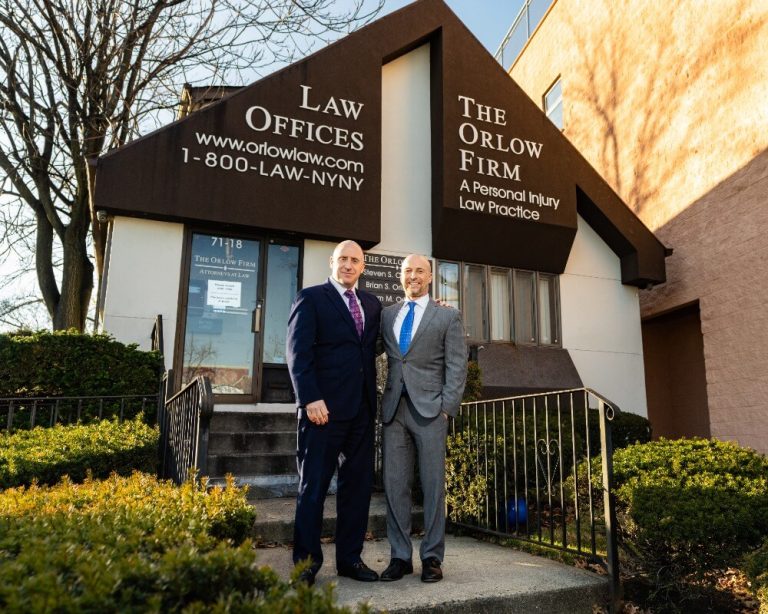
If you’ve been involved in a car accident in New York City, understanding liability can be confusing. Here are some frequently asked questions about owner and driver liability that may help clarify your situation:
Can the owner of a vehicle be held liable even if they weren’t driving at the time of the accident?
Yes. In New York, under the “permissive use” law, vehicle owners can be held responsible for accidents caused by someone else driving their vehicle with their permission. This means that if you lend your car to a friend or family member and they cause an accident, you, as the owner, may also be liable.
If my car was stolen and involved in an accident, am I responsible?
Typically, vehicle owners are not held liable for accidents caused by unauthorized drivers, such as car thieves. However, it’s important to promptly report the theft to the police. This documentation helps establish that the vehicle was taken without your permission and may protect you from liability.
Can both the owner and the driver be held liable for a car accident in NYC?
Yes. Depending on the circumstances, both the vehicle owner and the driver may share liability. For instance, if the owner knowingly allowed an inexperienced or impaired driver to operate their vehicle, both parties could be held responsible for damages resulting from an accident.
What if the driver who caused the accident was uninsured or underinsured?
If the at-fault driver is uninsured or underinsured, victims may still have options for compensation. New York law requires drivers to carry uninsured motorist coverage, which can help cover medical expenses and other damages. Additionally, depending on the specifics of the case, the vehicle owner’s insurance policy may provide some coverage.
How does liability work when the accident involves a company-owned vehicle?
When an employee causes an accident while driving a company-owned vehicle during work-related activities, the employer can generally be held liable under the principle of “respondeat superior.” This legal doctrine means employers are responsible for the actions of their employees performed within the scope of their employment.
What steps should I take after a car accident involving ownership or driver liability questions?
If you are involved in a car accident in NYC, you should:
- Ensure everyone’s safety: Move to a safe location if possible and call emergency services if anyone is injured.
- Document the scene: Take photos, gather witness information, and exchange insurance details.
- File a police report: Having an official record is essential, especially when liability is in question.
- Seek medical attention: Even if you feel fine, injuries can appear later, and medical documentation is crucial for your claim.
- Consult an attorney: Liability issues can be complex. Speaking with an experienced NYC personal injury attorney can help clarify your rights and responsibilities.
If you have additional questions about liability in your car accident case or need guidance navigating the legal process, contact The Orlow Firm today at (646) 647-3398 for a free consultation. Our experienced attorneys are here to help you understand your options and protect your rights.
Cindy Cordova is a seasoned legal writer with over seven years of experience crafting clear, informative, and professional content for law firm websites. With a B.A. in English from Trinity Christian College, she combines her strong writing background with a deep understanding of legal topics to help firms connect with their clients through trustworthy and accessible content.



